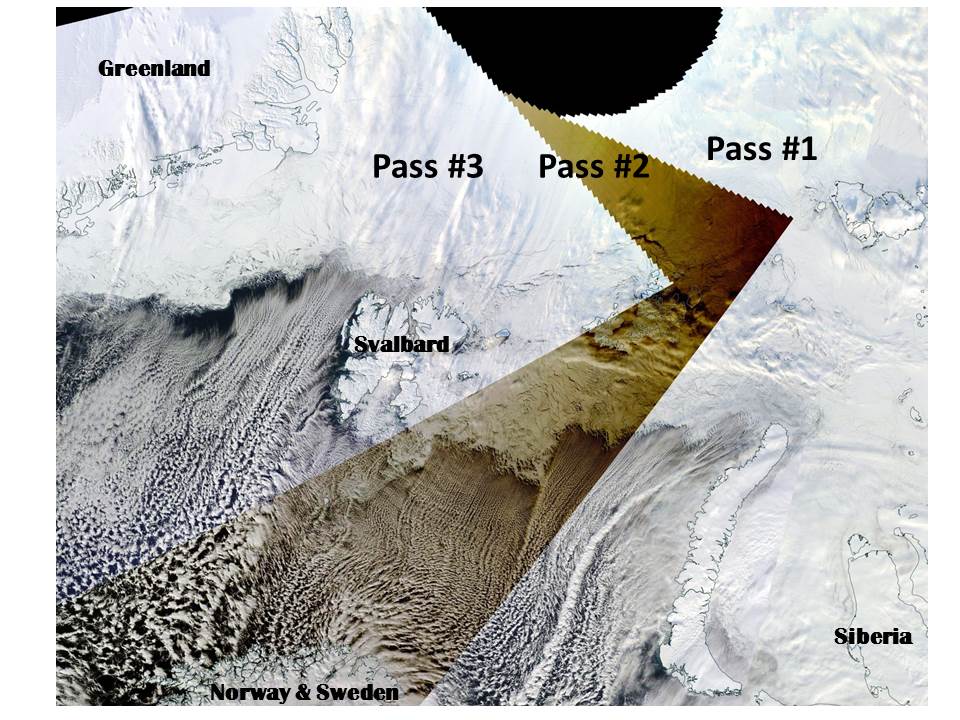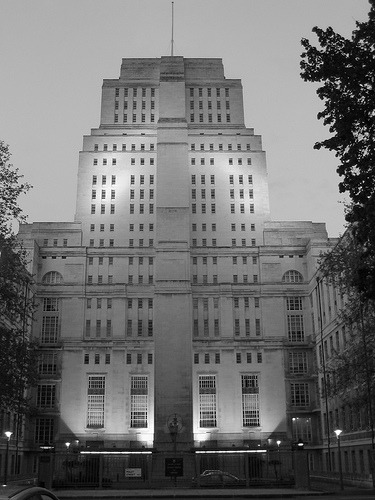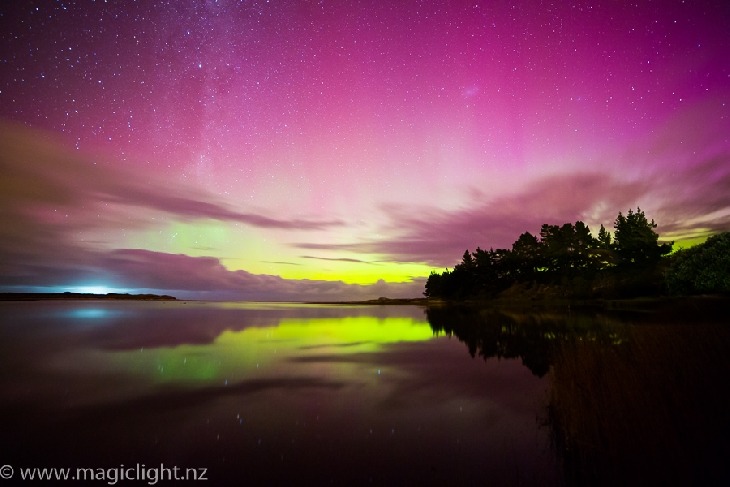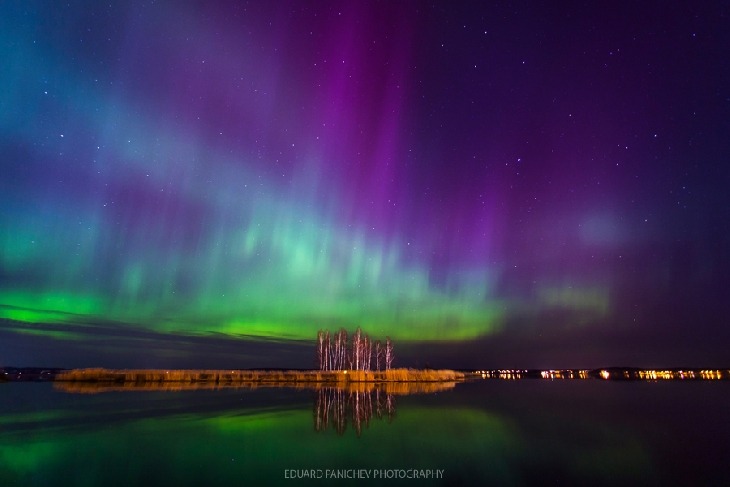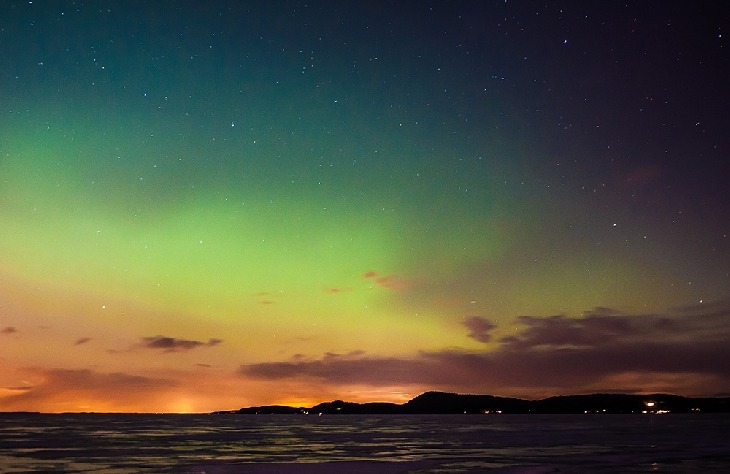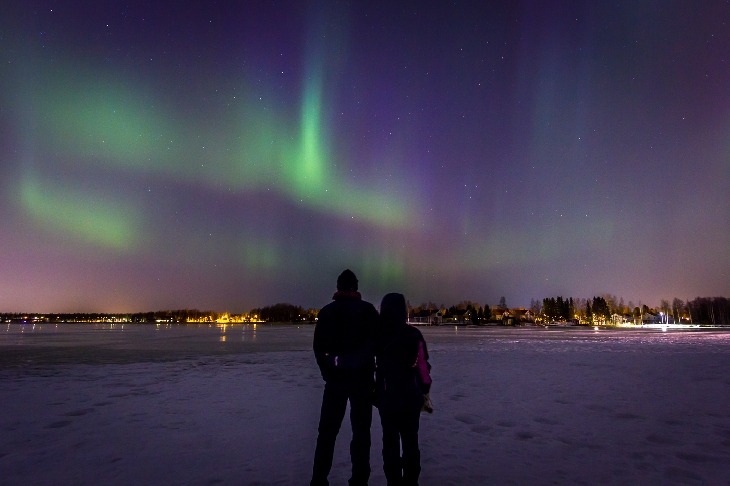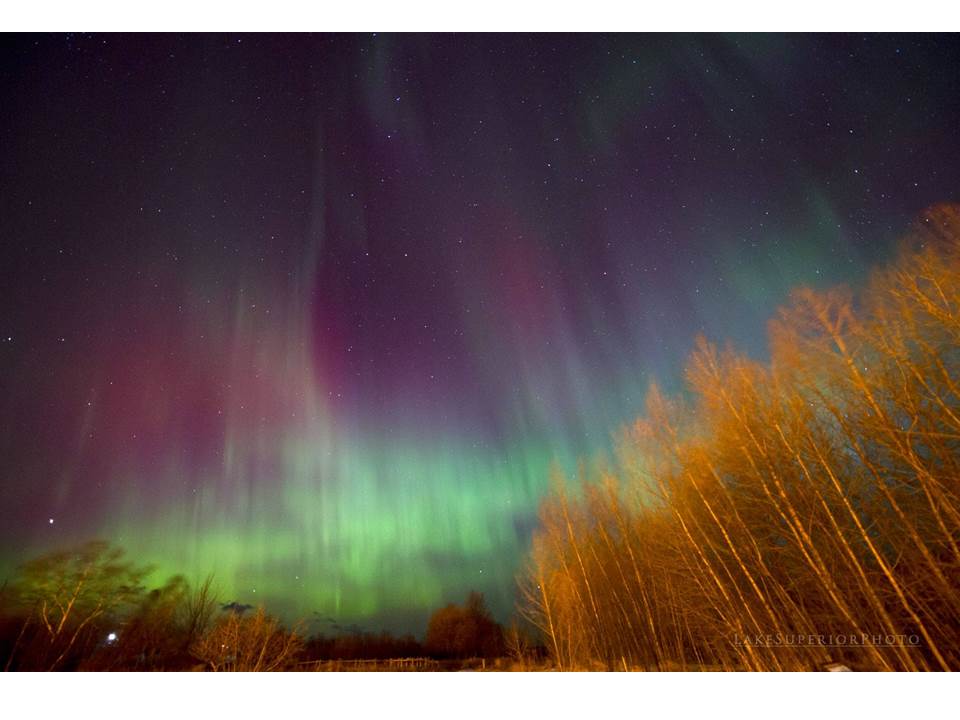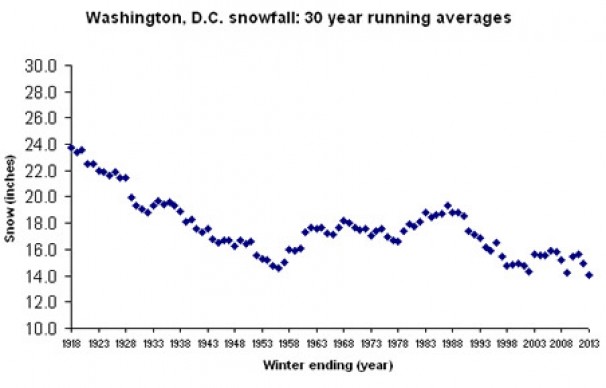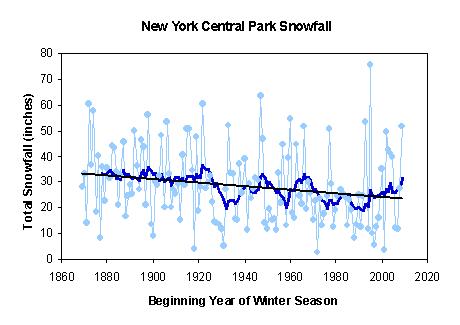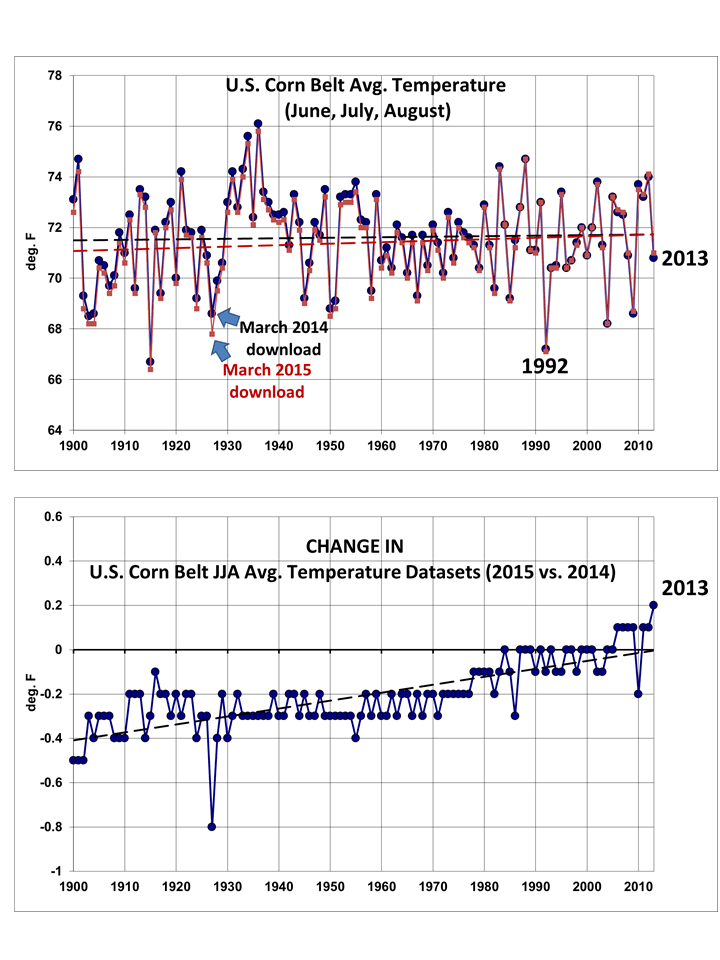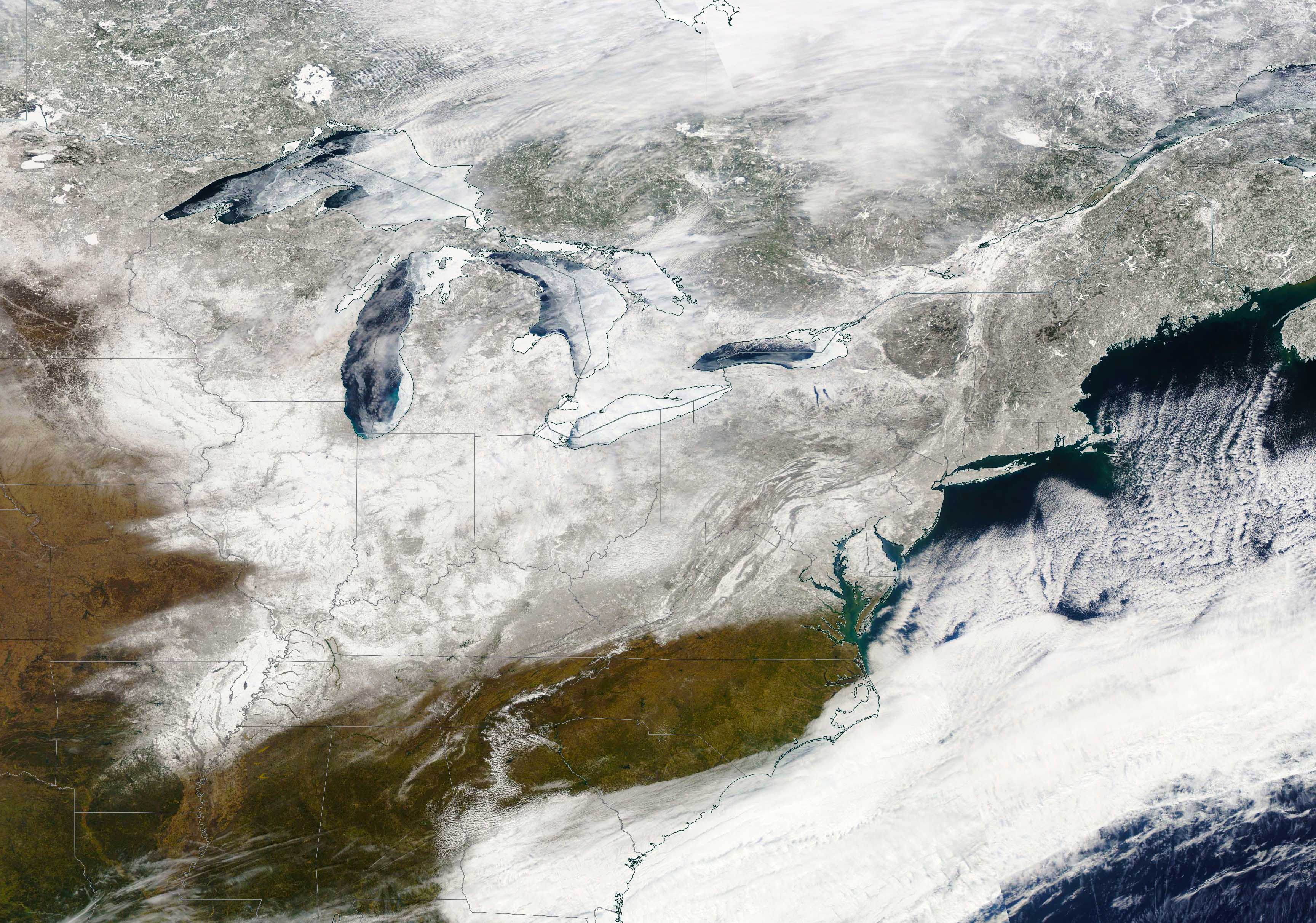Here’s a NASA MODIS view of this morning’s solar eclipse from the Terra polar-orbiting satellite. Terra takes a “snapshot” as it passes over every ~100 minutes, and this montage shows three successive orbits, with the second orbit capturing the effect of the eclipse on the solar illumination of the landscape and clouds. Note the distinctive difference in color (click image for full-size):
Archive for the ‘Blog Article’ Category
Color Satellite View of Solar Eclipse
Friday, March 20th, 2015Bring Back Our Tornadoes!
Thursday, March 19th, 2015
One of the many tragic consequences of human-caused climate change is the nearly unprecedented lack of tornadoes during the first half of March.
According to Greg Forbes, severe weather weenie at The Weather Channel, the only other year when this happened was 1969.
Clearly, this is just one more example of how we are destroying the climate system.
Atlas Shrugged, Net Neutrality, and Government Controlled Science
Thursday, March 19th, 2015It uses the latest Net Neutrality push and government attempts to shut down private funding of climate science as just the latest examples of a trend which is destroying competition… and ultimately prosperity. Crony capitalist elements of big business trying to seek competitive advantage by encouraging the government regulation end up finding themselves beholden to their government masters as a result.
I know this is all nothing new…I was just a little taken aback to realize that those of us who are skeptical of assertions there’s a “climate crisis” in need of government intervention and control are now players in the game, as a few in Congress try to intimidate us.
Al Gore has just announced the need to punish climate-change deniers…as if anyone denies that climate changes. Sheesh. Even we admit that humans have some influence on climate. But (1) the human portion is highly uncertain, and (2) we can’t do anything significant about it anyway without killing millions of people in the process.
Meanwhile, the mainstream media dutifully allows such perverted reframing of the terms of the debate to go unchallenged. Here’s John Christy’s response to that intimidation, published yesterday.
The Federalist article is well worth the read, especially for those familiar with Atlas Shrugged.
Most Spectacular Auroras of this Solar Cycle Last Night
Wednesday, March 18th, 2015Last night’s aurora event is being described by many as the most spectacular of this solar cycle, resulting from a severe geomagnetic storm (G4 intensity) as a coronal mass ejection from the sun hit the upper atmosphere.
New photos of the event continue to pour in from around the world at the SpaceWeather.com aurora photo gallery, which is running very slow right now.
Here are a handful of the photos posted there. Note the wide range of colors.
St. Pat’s Day Greeted with Green Aurora, Severe Geomagnetic Storm
Tuesday, March 17th, 2015A coronal mass ejection (CME) from the sun just arrived at Earth this morning, producing aurora and leading to severe geomagnetic storm conditions, with a Kp index of 8 now verified as of 10 a.m. EDT.
Here’s one aurora photo from Lake Superior Photo in Marquette, MI this morning, before the strongest portion of the CME arrived:
You can also check out some of the latest photos posted at SpaceWeather.com’s Realtime Aurora Gallery.
According to NOAA, here are the expected impacts today:
Potential Impacts: Area of impact primarily poleward of 45 degrees Geomagnetic Latitude.
Induced Currents – Possible widespread voltage control problems and some protective systems may mistakenly trip out key assets from the power grid. Induced pipeline currents intensify.
Spacecraft – Systems may experience surface charging; increased drag on low earth orbit satellites, and tracking and orientation problems may occur.
Navigation – Satellite navigation (GPS) degraded or inoperable for hours.
Radio – HF (high frequency) radio propagation sporadic or blacked out.
Aurora – Aurora may be seen as low as Alabama and northern California.
What if Boston Had Record Low Snowfall?
Monday, March 16th, 2015By yesterday evening, Boston officially received its greatest seasonal snowfall on record, 108.6 inches. The popular meme is that this is just one more example of human-caused climate change.
But unless you are in elementary school, or just don’t pay attention to what scientists or Al Gore say, you will remember when global warming was going to cause less snow.
If the Boston snows have been the result of global warming, how do we explain the long-term decrease in Washington DC snowfall?…
Or New York City snowfall?…
Those cities should also be experiencing more snow if global warming is to blame.
So, I ask, what would have been blamed if Boston (or New England in general) had received record low snow amounts this winter? Or, if the same region had seen record warmth, rather than record cold?
I will guarantee you — global warming would have also been blamed.
You see, this is the trouble with global warming theory. Everything that happens is folded into it, resulting in an endless list of absurd, and often contradictory, claims about the things that global warming / climate change causes.
Is it any wonder that the public is increasingly dismissive of what we climate scientists say?
A PhD and a computer have, so far, been insufficient tools to provide useful predictions of the future of our climate system. The current state of climate science — or maybe I should say, how scientists have allowed the media and politicians to portray it — is a continuing source of embarrassment to some of us.
Even Though Warming Has Stopped, it Keeps Getting Worse?
Monday, March 9th, 2015I was updating a U.S. Corn Belt summer temperature and precipitation dataset from the NCDC website, and all of a sudden the no-warming-trend-since-1900 turned into a significant warming trend. (Clarification: the new warming trend for 1900-2013 is still not significantly different from zero at the 90% confidence level. H/T, Pat Michaels)
As can be seen in the following chart, the largest adjustments were to earlier years in the dataset, which were made colder. The change in the linear trend goes from 0.2 deg F/century to 0.6 deg. F/century.
I know others have commented on the tendency of thermometer data adjustments by NOAA always leading to greater warming.
As Dick Lindzen has noted, it seems highly improbable that successive revisions to the very same data would lead to ever greater warming trends. Being the co-developer of a climate dataset (UAH satellite temperatures) I understand the need to make adjustments for known errors in the data…when you can quantitatively demonstrate an error exists.
But a variety of errors in data measurement and collection would typically have both positive and negative signs. For example, orbit decay causes a spurious cooling trend in the satellite lower tropospheric temperatures (discovered by RSS), while the instrument body temperature effect causes a spurious warming trend (discovered by us). The two effects approximately cancel out over the long term, but we (and RSS) make corrections for them anyway since they affect different years differently.
Also, the drift in satellite local observation time associated with orbit decay causes spurious cooling in the 1:30 satellites, but spurious warming in the 7:30 satellites. Again this shows that a variety of errors typically have positive and negative signs.
In contrast, the thermometer data apparently need to be adjusted in such a way that almost always leads to greater and greater warming trends.
How odd.
Worst Dust Storm in 12 Years Hits Oman
Sunday, March 8th, 2015A spectacular satellite view of the dust storm that hit portions of Oman yesterday. High winds coming off the deserts of southern Iran associated with a cold front are what causes this kind of event. The first image shows the front just north of Muscat City, the second a few hours later shows coastal Oman enveloped in dust, then the third image from today (March 8) shows a cyclonic pattern to the cloud of dust (click image for full-size):
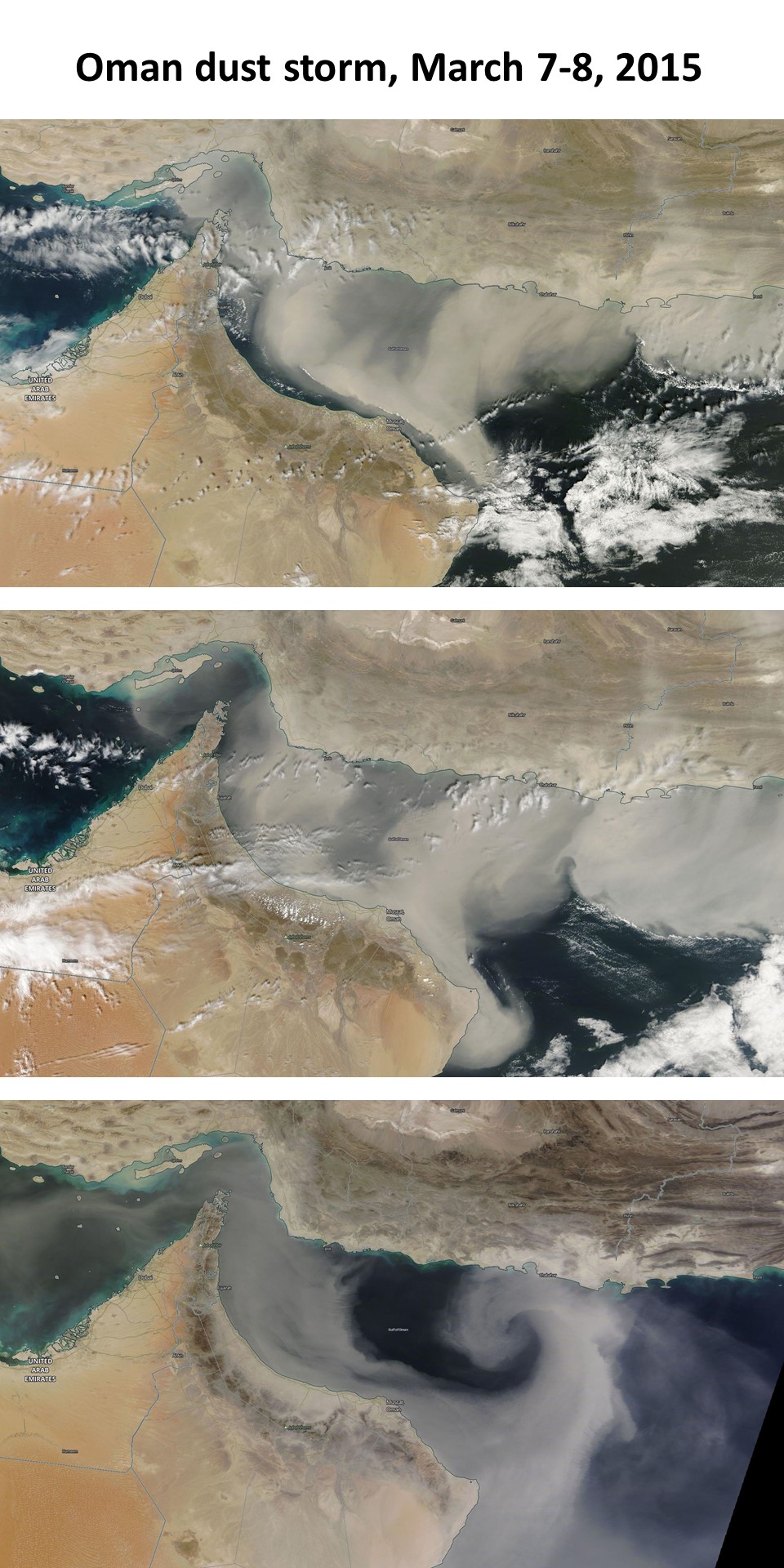
Extraordinary Color View of Eastern U.S. Snow Cover
Saturday, March 7th, 2015Of Bad Luck and Space Mission Numbering
Wednesday, March 4th, 2015 A couple of days ago, one of DoD’s polar-orbiting weather satellites — “F-13” — exploded. They aren’t sure why, but one insider has claimed it was an overheated battery. I guess I don’t see how an overheated battery causes the disintegration of a satellite into 40+ chunks, unless it ignited leftover hydrazine propellant.
A couple of days ago, one of DoD’s polar-orbiting weather satellites — “F-13” — exploded. They aren’t sure why, but one insider has claimed it was an overheated battery. I guess I don’t see how an overheated battery causes the disintegration of a satellite into 40+ chunks, unless it ignited leftover hydrazine propellant.
Now, I don’t consider myself superstitious, but there has been a pattern of failure among space missions involving the number “13”.
Out of the NOAA polar orbiting satellites (NOAA-6, -7, -8, -9, -10, -11, -12, -13, -14, -15, 16, -17, -18, -19), which one might you guess failed? That’s right, NOAA-13. In 1993 after less than 2 weeks on orbit, NOAA-13 experienced a short circuit in it’s battery charging system, rendering the satellite useless. In contrast, NOAA-15 is now in it’s 17th year of continuous operation.
And guess which Apollo mission nearly ended in disaster? Apollo-13, after an oxygen tank exploded and Tom Hanks almost single-highhandedly brought the Moon mission safely home.
And what about the GOES-13 geostationary weather satellite that failed just before hurricane season started (in 2013!). It was later brought back from the dead (after 2013, of course).
I think I would just skip “13” when numbering satellites. Maybe use “12A” instead.
And don’t get me started about calling a satellite “ADEOS”. The Japanese Earth observation satellites ADEOS-I and ADEOS-II both failed early in their missions from solar panel malfunctions. The successful follow-on Japanese satellite is GCOM-W, which fortunately doesn’t mean “bye-bye” in any language.
Oh! I almost forgot! The Japanese name for the 2 failed ADEOS satellites was “Midori”, which in Japanese means…wait for it…”green”.

 Home/Blog
Home/Blog